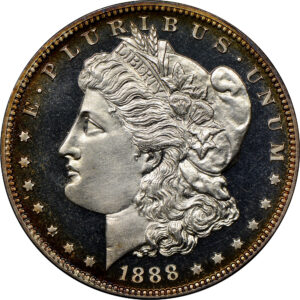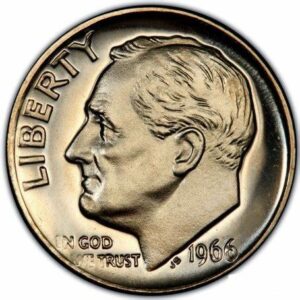
The Different Types of Coin Strikes
Category: Determining Collectability
Coin strikes hold a wealth of knowledge that encompasses culture, economics, history, and human creativity. In understanding how coins are made, we develop a greater appreciation for these artifacts and how each unique minting process shapes the numismatic landscape.
Here, we’ll delve into the intricacies of coin striking, exploring their defining features, historical context, and implications within the world of coins.
Definition of Coin Strikes
Coin strike refers to the process of pressing an image into a blank metal disk, known as a planchet. The process is an integral part of minting, guaranteeing that the final coin has a distinct design. It is also a combination of artistry, technical skill, and machinery to create a coin that is ready for circulation or collection.
There are three main types of coin strikes used in coin production: the mint strike, proof strike, and burnished strike.
Mint Strike
The most common type of coin strike is the mint strike, also known as the business strike, bullion strike, or circulation strike.
Mint or bullion strike coins have a long and fascinating history that date back to ancient times—from 6th century BCE to the fall of the Western Roman Empire, when coins were first used as a medium of exchange. They played a pivotal role in facilitating trade and commerce, evolving alongside the development of monetary systems.
Compared to the proof strike and burnished strike, the mint strike coin is the only one that’s not directly sold to the public by the Mint. Instead, they are distributed to vendors and coin dealers who then make them available to the public. The production process for mint strike coins also differs in that they are struck only once.
To allow for greater availability and lower cost, they are initially packaged in rolls of multiple coins, rather than the individual airtight holders that are normally used for coins of greater numismatic value.
In terms of design, bullion strike coins look simpler and bolder. This ensures that the focus remains on the intrinsic value of the precious metal. In some cases, they may also not carry mintmarks, contributing to their universal appeal as they can be minted at different locations.
Proof Strike

1988 Proof Strike Morgan Dollar
It's important to note that "proof" in the context of minting has more to do with the method of manufacture and not the grade or condition.
Proof strike coins are produced with the highest level of craftsmanship and precision, and are intended for coins with numismatic and collection purposes. The main characteristic of a proof strike is that it employs a special process that produces a polished finish, one that is often described as mirror-like.
During a proof strike, the coin is struck multiple times using high-tonnage presses. While the exact number of coin strikes may vary depending on the minting facility, design, or specific coin series, it is not uncommon for proof strike coins to undergo at least two or more strikes to achieve the desired appearance.
The background is polished while the design elements are produced with a frosted or matte finish, creating a distinct contrasting effect. Because a proof strike coin can have two or more strikes on each planchet, this adds to its value and rarity.
In reverse proof coins, the minting process is different. The coin die used is specially prepared so raised design elements appear polished and mirror-like while the background has a frosted or matte finish. Both standard proof strike coins and reverse proof strike coins are highly sought after by collectors due to their unique contrast and limited availability.
Burnished Strike

2008-W $1 Burnished Silver Eagle (Special Strike)
(Obverse and Reverse)
The burnished strike is a specialized minting technique that involves additional steps in the minting process to produce a satin-like finish. Carefully selected planchets are loaded into a burnishing machine, which typically consists of a chamber or rotating drum. A polishing media is also loaded into the drum—usually millions of tiny 6mm balls or, in the past, wet sand. As the drum rotates, the planchets rub and tumble against the media where the friction begins to smoothen the surface of the planchet, giving it that matte finish the burnished strike is known for.
Similar to proof strike coins, burnished coins can be struck several times depending on the intended design and series. The burnishing process itself was introduced into the United States Mint’s product line in 2006, during the production of the American Silver Eagles, the most popular silver bullion coins in the world. It’s worth noting that all the silver, gold, and platinum American Eagle Coins minted after 2006 include a mint mark.
In terms of rarity and value, burnished strike coins are less common compared to standard mint strike coins or proof strike coins, and are often a part of special collector sets or limited-edition releases. As such, they can hold a higher value to coin collectors and coin enthusiasts.
The Special Mint Set (SMS) Coins

1966-P Roosevelt Dime (Special Mint Strike)
Between 1965 to 1967, the United States Mint suffered a shortage of proof coin blanks due to the rising value of Silver. As an alternative to proof strike coins, the United States Mint instead produced the Special Mint Set coins, which some coin experts describe as a hybrid between proof strike and mint strike.
SMS coins were produced with special care, and have several distinct characteristics. First is the matte-like appearance, or what many collectors call a satin finish. It’s similar to what you would find in proof strike coins, but with less of the mirroring effect and a slightly more granular texture. SMS coins exhibit sharper detail and more defined coin strikes compared to regular circulation coins. The inscriptions and devices are also more pronounced and have a higher level of relief.
When traditional proof coin production resumed in 1968, the production of mint strike coins was discontinued. Due to their limited availability, special mint strike coins are highly sought after by discerning coin collectors and numismatists today.


